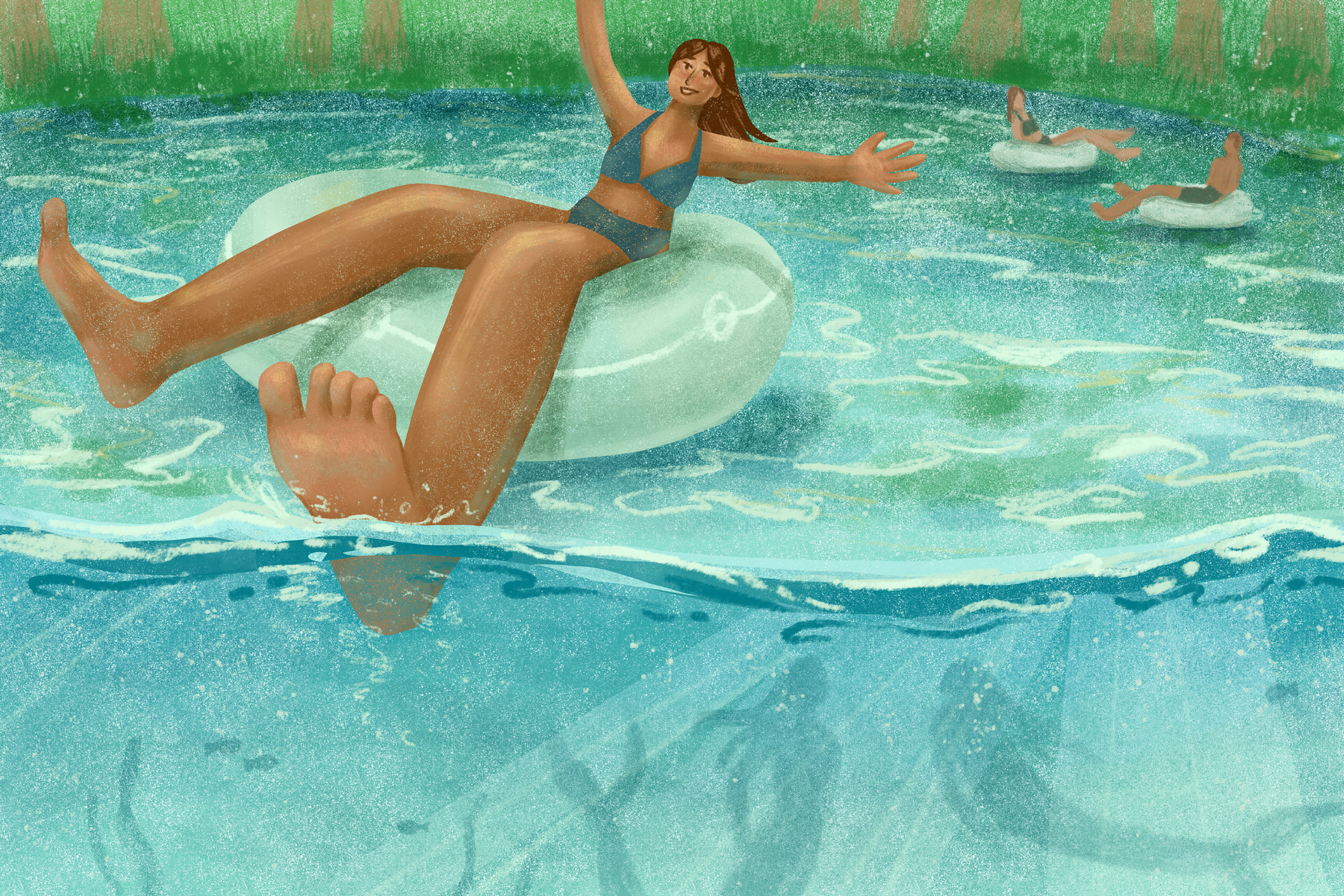On the west coast of central Florida sits a theme park where fantasy creatures come to life. Throughout its 76-year history, this theme park has drawn the attention of world-famous celebrities, Hollywood filmmakers and visitors from all around the globe. What started as the dream of a retired Navy man in the late 1940s turned into an international sensation. The park is Weeki Wachee Springs, the home of living mermaids.
Weeki Wachee Springs State Park is located on a natural Florida spring that is made ideal by its crystal-clear waters and comfortable temperatures, a reasonable 72-74 degrees Fahrenheit year round. When the park’s founder, Newton Perry, first came to the spring in 1946, he found both its potential and its problem. Sitting near a highway, the spring was the perfect spot for a new roadside attraction. However, the spring and its river were heavily polluted with garbage from nearby neighborhoods. Determined to make his dream business a reality, Perry paid to have the litter cleared out, restoring the natural beauty of the spring.
Florida springs had been in Perry’s life long before his discovery of Weeki Wachee. He was a talented competitive swimmer, practicing his sport often in the waters of Silver Springs in Ocala, Florida. He became a swim instructor at a young age and later went on to train divers for the US Navy. When his time with the Navy was over, he became a consultant for Hollywood film studios, scouting underwater filming locations and other skilled swimmers in the state of Florida. He pointed Universal Studios to Wakulla Springs as a filming location for their famous movie, “Creature from the Black Lagoon.” Soon, Perry decided it was time for him to take on his very own project in the entertainment world—creating a park where his knowledge of the entertainment industry and his love for swimming could come together.
Taking advantage of Weeki Wachee’s clear and temperate waters, Perry decided to build an underwater theater six feet below the surface where skilled divers would perform elaborate shows in front of audiences. Visitors sit in a room below ground and, instead of a stage, they face a glass wall that separates the room from the waters of the spring. Perry built his theater quickly, but he needed performers. In the 1940s and 50s, the area surrounding the spring was sparsely populated with little job opportunities for residents. Perry’s dream brought a new profession to the area—the Weeki Wachee mermaids.
Having worked as a diving instructor for the U.S. Navy, Perry put his teaching skills to the test as he brought his mermaids to life. He trained young women to perform stunts such as dancing, drinking soda and eating fruit underwater. To allow his performers to stay underwater for long periods of time, Perry invented his own system for underwater breathing. He installed long, straw-like air hoses that the mermaids could access during the shows without resurfacing. The air compressors that the hoses were attached to allowed for easy breathing, subtle enough to keep the show rolling with no interruptions. The attraction was officially open for business in 1947.
To draw in visitors in its early days, the park relied heavily on the mermaids’ ability to attract attention by standing on the roadside and waving at cars. In 1948, Weeki Wachee was presented with its first great opportunity for international publicity. Universal Studios was in the process of producing the film “Mr. Peabody and the Mermaid.” It was crucial for them to find the perfect place to record their underwater scenes. They needed an area with warm, clear water and sufficient space for filming. Weeki Wachee was the obvious choice. Thus, the park had its first collaboration with Hollywood.
In 1959, the American Broadcasting Company, otherwise known as ABC, purchased Weeki Wachee Springs. This new ownership immediately began improving the park and preparing it for heavy commercial promotion. A larger and deeper theater was built. New shows were developed and a longer training program for aspiring mermaids was introduced. ABC was also able to pay the mermaids real salaries for the first time. Previously, the mermaids were only paid for their labor with meals and swimsuits. The early mermaids wore simple swimsuits during performances, contrasting with today’s costumes which feature realistic mermaid tails. In the 1960s, young women traveled from other Florida cities, other states and even other countries just for the opportunity to become a mermaid.
In 1961, world-famous singer Elvis Presley visited Weeki Wachee Springs. Behind him followed 3,000 fans who came to the park just to see him. Presley’s visit to Weeki Wachee was yet another fantastic publicity event for the park, but the mere fact that Presley knew about the park is a testament to how far and wide word of the park was spreading.
In 1964, Weeki Wachee was granted another great opportunity for publicity when the park was chosen to host the world premiere of The Incredible Mr. Limpet. A ten-minute documentary titled “Weekend at Weeki Wachee” is included in the special features of the film’s DVD versions. The feature chronicles the weekend of the film’s premiere, following the film’s stars as they meet with the press and tour the park. The weekend concludes with the showing of the film, presented on a projector screen inside the underwater theater. The premiere was a great promotional event for the park, but the documentary is a lasting artifact that continues to promote the park with every sale of the DVD.
In 1971, everything changed for the old Florida attractions that once dominated the state’s tourism. Walt Disney World opened in Orlando. Another serious blow to Weeki Wachee’s popularity was the completion of the interstate highway I-75. Weeki Wachee is located on US-19. At the time of the park’s construction, US-19 was the only major highway in Florida, placing it in what used to be the perfect spot to attract the attention of travelers. I-75 created a new route for travelers, away from Weeki Wachee Springs. In 1984, ABC sold Weeki Wachee to Florida Leisure Attractions.
With fewer people visiting the park, Weeki Wachee Springs began struggling for funds. In 2004, the Weeki Wachee mermaids started a fundraising campaign called “Save Our Tails” to help compensate for the decrease in visitors. This is when the since-dissolved city of Weeki Wachee began to step in. The mayor of Weeki Wachee donated his salary to the Save Our Tails campaign. Later, the city acquired ownership of Weeki Wachee Springs but did not retain this ownership for long. In 2008, the city donated the attraction to the state of Florida, making Weeki Wachee Springs an official state park. The park now receives its funding from the state, keeping it open for business to entertain visitors just as it always has.
It has been a long time since Weeki Wachee’s last interaction with Hollywood and its last visit from a celebrity. Still, the park continues to attract visitors every day. Their elaborate production of “The Little Mermaid” is a fan-favorite and a warm childhood memory for many of the area’s residents. On a weekend, travelers driving past the park will see its parking lot overflowing with vehicles. Visitors will park on the side of the road just to gain access to the attraction. Besides the mermaid shows, Weeki Wachee offers gift shops, river cruises and its own water park called Buccaneer Bay. With a rich legacy and a unique approach to entertainment, the beautiful Weeki Wachee Springs is a piece of classic Florida history that continues to make history today.
















